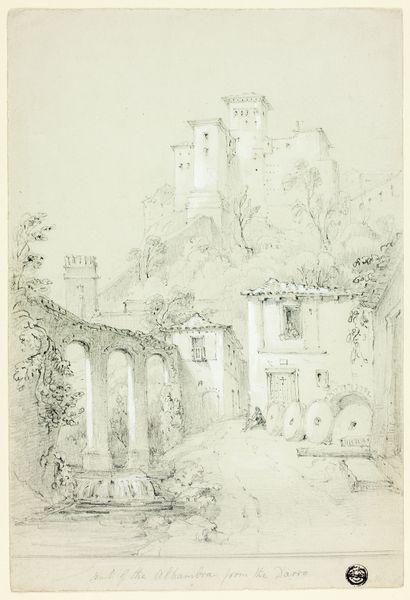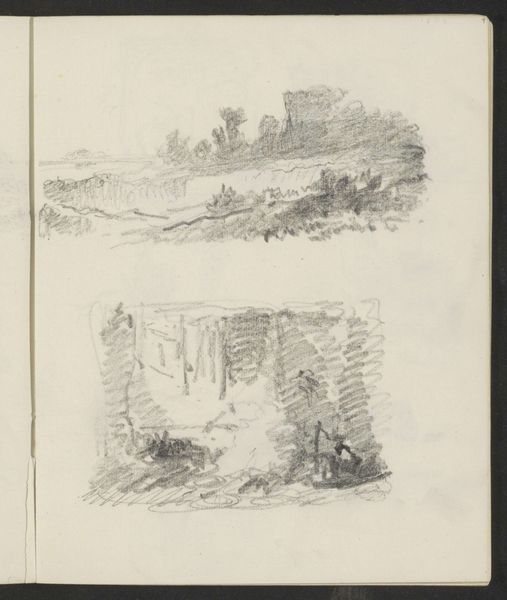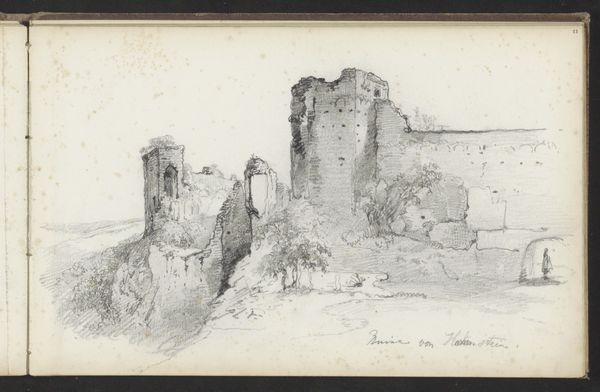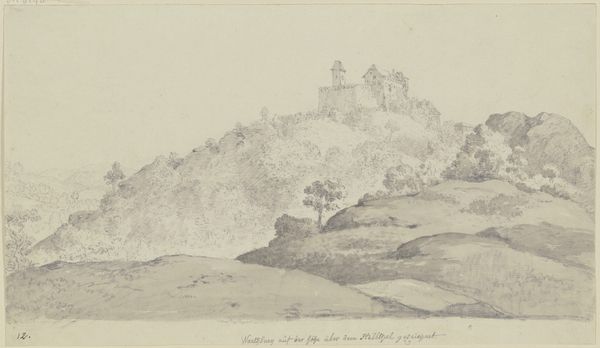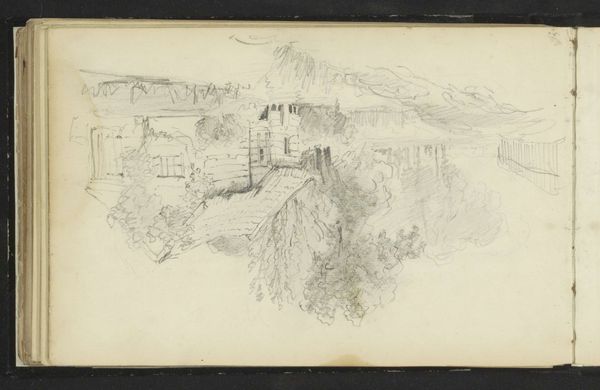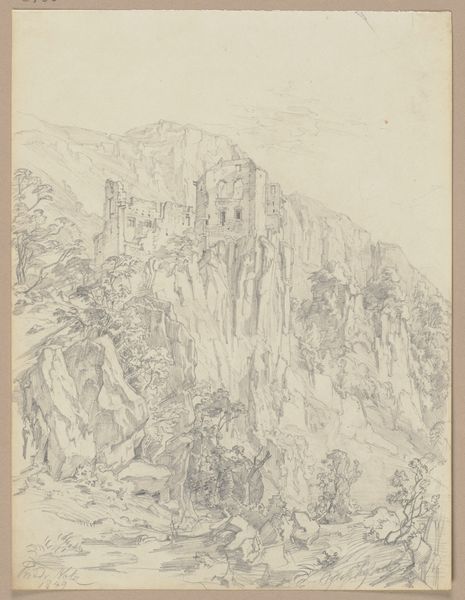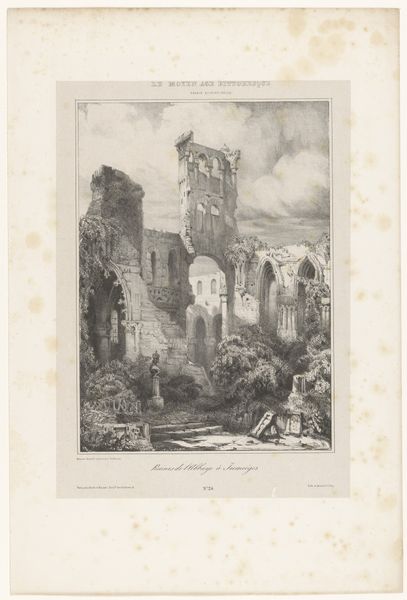
drawing, ink, indian-ink, architecture
#
drawing
#
light pencil work
#
quirky sketch
#
pencil sketch
#
landscape
#
personal sketchbook
#
ink
#
german
#
sketchwork
#
ink drawing experimentation
#
indian-ink
#
pen-ink sketch
#
15_18th-century
#
sketchbook drawing
#
storyboard and sketchbook work
#
sketchbook art
#
architecture
Copyright: Public Domain
Georg Melchior Kraus captured "Die Ruine der Kunitzburg bei Jena" in a drawing. Kraus lived during an era of significant social and political transformation, including the Enlightenment and the French Revolution, which influenced his artistic perspective. The artwork presents the ruins of Kunitzburg Castle near Jena, Germany. Kraus's choice to depict ruins reflects the cultural interest in the past during the late 18th century. Ruins often symbolize the transience of human achievements and the inevitable decay of power structures. Kraus subtly critiques the feudal system by portraying the castle not in its former glory but as a relic. The presence of a figure seated among the ruins invites contemplation on history, memory, and individual experience within the broader narrative of societal change. Kraus evokes a sense of longing for a past intertwined with the complexities of power and social hierarchy. It invites viewers to reflect on the emotional and personal dimensions of historical transformation.
Comments
No comments
Be the first to comment and join the conversation on the ultimate creative platform.


